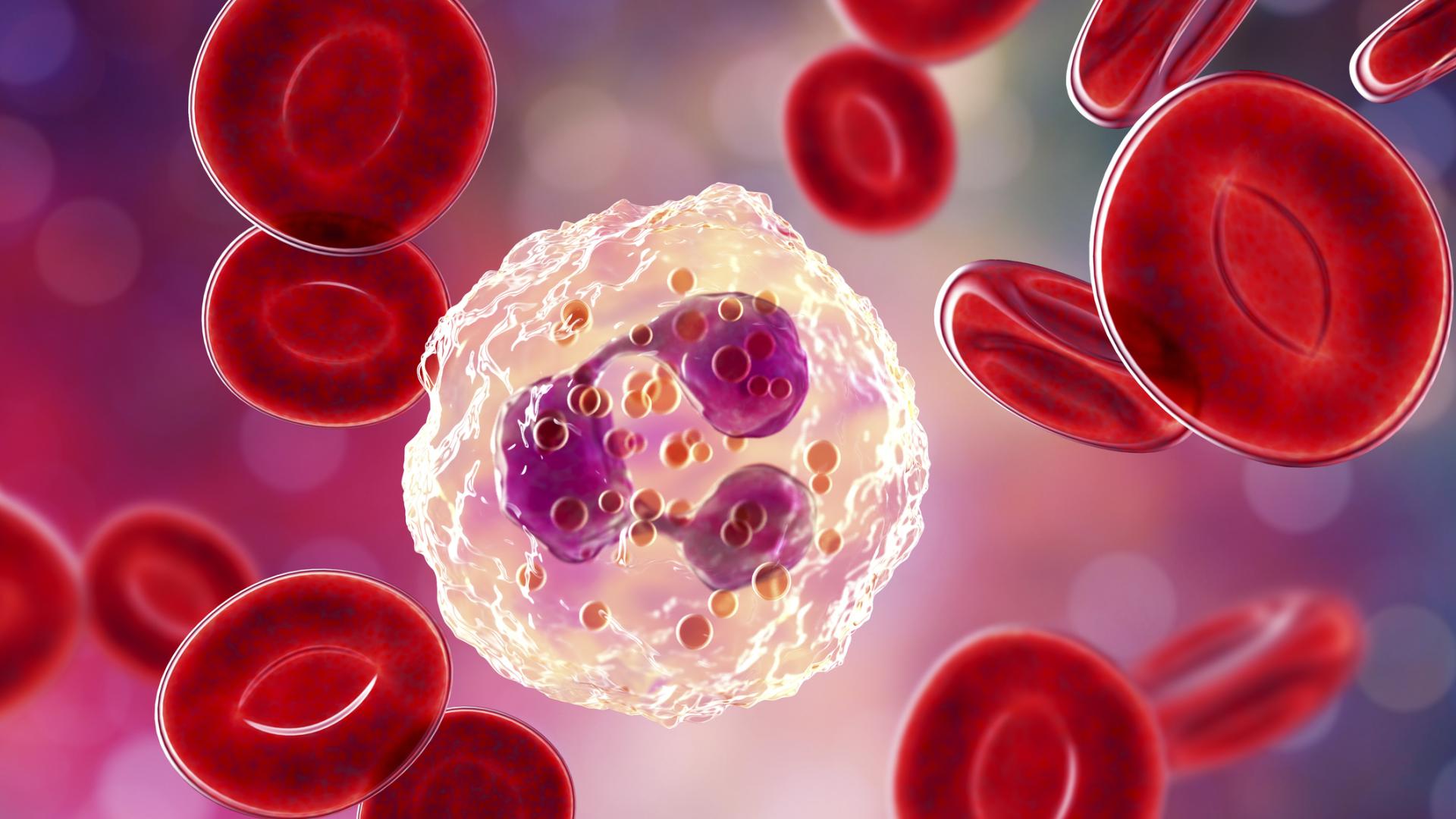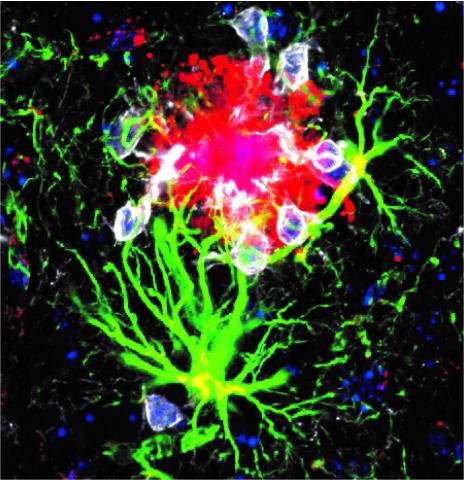Why APOE4 Makes Women More Susceptible to Alzheimer’s
Written By: Caleigh Findley, PhD
Reviewed By: Sharyn Rossi, PhD Senior Director, Neuroscience Programs, BrightFocus Foundation

Written By: Caleigh Findley, PhD
Reviewed By: Sharyn Rossi, PhD Senior Director, Neuroscience Programs, BrightFocus Foundation

Men and women experience Alzheimer’s differently—right down to the way their brains and bodies respond to the disease, according to a new study funded by BrightFocus Foundation’s Alzheimer’s Disease Research program.
Postdoctoral researcher and lead study author Neta Rosenzweig, PhD, uncovered not only a unique biological underpinning to Alzheimer’s risk for women, but also a potential drug target for future therapies. The study, published in Nature Medicine, builds on decades of findings from Alzheimer’s Disease Research grant recipient and senior study author, Oleg Butovsky, PhD, distinguished neurology chair and associate professor at Harvard Medical School.
Their work suggests that blood immune cells infiltrate the brain and prevent the removal of amyloid plaques, driving cognitive impairment for people with the Alzheimer’s risk gene APOE4. This interaction appears earlier and stronger in women and is a likely contributor to the increased risk of Alzheimer’s for women. The study authors encourage progress toward a personalized medicine approach to treatment based on these findings and current knowledge of sex differences in Alzheimer’s.
Nearly 20 years ago, Dr. Butovsky began investigating a potential new biomarker for Alzheimer’s during his postdoctoral fellowship at the Weizmann Institute of Science. His mentor, Michal Schwartz, PhD, pioneered a seemingly controversial approach to neurodegeneration. She believed that immune cells found in the blood could be directed to help fight against devastating diseases like Alzheimer’s.

“No one really got the word ’neuroimmunology’ because the brain people were absolutely disconnected from immunology people,” said Dr. Butovsky. The study of connections between the brain and immune system that now dominates much of the Alzheimer’s research space was in its infancy.
Dr. Butovsky set out on a four-year collaboration between research laboratories. Taking cells from 80 human brains in the Dutch Brain Bank, he generated a large genomic dataset that examined men and women who either carried a copy of APOE4 or did not. APOE4 is the strongest genetic risk factor for Alzheimer’s, with female carriers being at greater risk than male carriers.
Dr. Butovsky investigated how brain-specific immune cells, called microglia, are affected by APOE4. Such a question had not been successfully examined at this level before.
Microglia act as sensors of brain health, he explained. Any minor changes that throw the brain out of balance are reflected in these immune cells. From this genetic dataset came a big surprise that would spark years of continued research.

They found that microglia sensed changes happening in blood immune cells, called neutrophils, that are first responders to fight off bacteria and pathogens. This was particularly true for female brains with APOE4 before any signs of cognitive decline. Such findings suggested that APOE4 puts women at greater risk for Alzheimer’s because it triggers changes in neutrophils in the blood, which are then picked up by microglia in the brain.
“That was a really big discovery,” said Dr. Butovsky. The findings of this “tour de force” collaboration were published this year in Nature Medicine.
Dr. Butovsky’s research team had previously made headlines in 2017 with a major discovery on how microglia change during these diseases and what drives that change.
Microglia are not just brain sensors, they are also the janitors responsible for clearing amyloid plaques, Dr. Rosenzweig explains. “Microglia that are healthy should [clean up plaques] and resolve the inflammation quickly. But what happens in Alzheimer’s is this process is impaired, and microglia fail to respond to neurodegeneration and to those plaques.”
The damage to brain cells caused by plaques instigates a change in microglia. These immune cells go from a calm, peace-keeping state to a disease-fighting inflammatory response. In their prolonged attempt to remove plaques, the microglia generate chronic, damaging inflammation that will eventually prevent them from clearing plaques altogether.
Dr. Butovsky’s seminal publication found that APOE cell signaling drives the change from healthy to diseased microglia in Alzheimer’s and other similar diseases. By identifying a driver, the researchers had uncovered a potential avenue to restore microglia back to health.
Dr. Rosenzweig and team put this theory to the test in 2023. They showed not only that APOE4 keeps microglia from responding to neurodegeneration—but that she could correct this by selectively deleting this Alzheimer’s risk gene in animal models.
It was at this moment that Dr. Rosenzweig had gained enough understanding to turn her sight back to the blood immune cells and Dr. Butovsky’s work with the Dutch Brain Bank. She had also trained with Dr. Michal Schwartz —15 years apart.
“I’m passionate about how the immune system talks to the brain cells, and how we can harness the good interactions and inhibit the bad interactions,” said Dr. Rosenzweig.

With support from Alzheimer’s Disease Research, she harnessed findings from the Dutch Brain Bank dataset to explore how sex and APOE4 affect the interaction between microglia and neutrophils.
Dr. Rosenzweig explains that neutrophils respond to the inflammation caused by plaque buildup in the brain during Alzheimer’s. “That’s when neutrophils come to play—they will slowly infiltrate the brain.”
“What we found is a mechanism by which those neutrophils make microglia worse,” she continued. The study findings illustrate a communication pathway in APOE4 carriers by which neutrophils release an inflammatory factor, called interleukin-17F, that interacts with a protein on the surface of microglia to suppress their ability to remove plaques. This negative interaction is unique to APOE4 carriers—and especially strong for women.
The suppressive action of neutrophils on microglia appears in cognitively healthy women with APOE4, suggesting the gene is driving up Alzheimer’s risk for women by speeding up immune aging. Researchers showed that this interaction also marked the transition to mild cognitive impairment—a stage before Alzheimer’s.
Whether these findings in neutrophils are a symptom or a driver of Alzheimer’s remains uncertain. However, the early onset of this neutrophil-microglia interaction is important to predicting disease progression and initiation, Dr. Butovsky explained.
“If what we’re finding is right, well, then it says that neutrophils may be primary to the disease. They’re not just a responder, but the initiator of disease,” he said.
Personalized medicine is the way of the future. Sex and genetics play a consequential role in how a person will experience disease, including Alzheimer’s.

These factors can also impact how they respond to treatment, which researchers have already observed with approved Alzheimer’s therapies. As the study authors state, “Female patients were less responsive to [Leqembi] compared to male patients. Moreover, APOE4 carriers showed reduced response to [Leqembi].” Differences in biology spell real-world implications for what will be the most effective approach to treating Alzheimer’s— an approach that is unlikely to be one-size-fits-all.
Further, the journey to publication was one of extensive collaboration between scientists, physicians, and donors. “This work would not come without all these amazing collaborators around,” said Dr. Butovsky. He aims to keep science moving forward by sharing the data bank he created as a resource for the larger scientific community, so that they may use it to unlock new discoveries.
“You can see the momentum…to go and really re-explore, re-discover, [and] re-investigate,” said Dr. Butovsky. “This is what we tried 20 years ago, but very limited. With technology today—we’re starting a completely different era in time.”
BrightFocus Foundation is a premier global nonprofit funder of research to defeat Alzheimer’s, macular degeneration, and glaucoma. Since its inception more than 50 years ago, BrightFocus and its flagship research programs—Alzheimer’s Disease Research, Macular Degeneration Research, and National Glaucoma Research—has awarded more than $300 million in research grants to scientists around the world, catalyzing thousands of scientific breakthroughs, life-enhancing treatments, and diagnostic tools. We also share the latest research findings, expert information, and resources to empower the millions impacted by these devastating diseases. Learn more at brightfocus.org.
Disclaimer: The information provided here is a public service of BrightFocus Foundation and is not intended to constitute medical advice. Please consult your physician for personalized medical, dietary, and/or exercise advice. Any medications or supplements should only be taken under medical supervision. BrightFocus Foundation does not endorse any medical products or therapies.
Every Donation is a Step Forward in the Fight Against Alzheimer’s
Your donation powers cutting-edge research and helps scientists explore new treatments. Help bring us closer to a cure and provide valuable information to the public.
Donate Today